How to identify quality lab grown diamond earrings?
Key Takeaways:
- Identifying quality lab-grown diamond earrings is important to ensure you are getting a high-quality product.
- When evaluating lab-grown diamond earrings, consider factors such as diamond cut, diamond setting, and the reputation of the jeweler.
- Expert tips for evaluating quality include advanced testing methods, traditional gemological observations, laser inscription, and using tools like the GIA ID100.
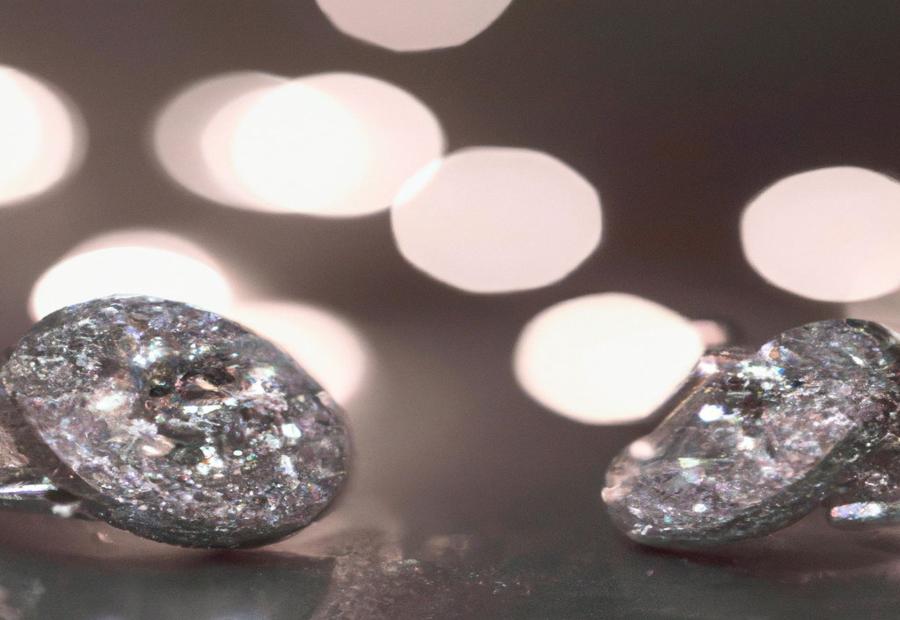
Photo Credits: Www.Lab-Grown-Diamond-Earrings.Com by Kyle King
In this section, we will uncover the essential aspects of identifying quality lab-grown diamond earrings. We’ll explore the characteristics and benefits of lab-grown diamonds, as well as understand why it is crucial to determine their quality. With intriguing insight and reliable sources, we’ll navigate the world of lab-grown diamonds and equip you with the knowledge to make informed purchasing decisions.
Lab-grown diamonds
Lab-grown diamonds have the same carbon structure as natural diamonds, making them physically and chemically identical. Plus, they don’t require mining operations and can be ethically sourced, so they offer a sustainable alternative for those seeking environmental and ethical factors in their purchasing decisions.
To evaluate quality, diamond cut, setting design, and the expertise of jewelry professionals all play important roles. To make sure you get a quality lab-grown diamond earring, it’s important to use advanced testing methods like laser inscription and traditional gemological observations. Also, look for reputable jewelers that specialize in lab-grown diamond jewelry, and consult experts like the Jewelry Judge. Finding a needle in a lab-grown diamond haystack requires comprehensive quality evaluation!
Importance of identifying quality
Lab-grown diamonds are becoming more popular in the jewellery market. It is essential to recognize their quality.
Finding out where lab-grown diamonds come from is imperative. This is because there are distinctions between them and natural diamonds that can change their value and desirability. Consumers can make educated decisions when they precisely recognize lab-grown diamonds.
It is vital to check lab-grown diamonds against natural ones. Although they may look the same to the eye, there are delicate differences that trained professionals can spot. These differences could include discrepancies in colour, clarity, and interior features, which all affect the diamond’s quality.
When determining the quality of lab-grown diamond earrings, you should also think about their ethical origins. Unlike natural diamonds, which are linked to environmental and human rights troubles, lab-grown diamonds are made in a controlled laboratory atmosphere without any negative effect on communities or ecosystems.
To evaluate the quality of lab-grown diamond earrings, there are professional tips and tools available. Spectroscopy and microscopy can provide information about the diamond’s composition and structure. Furthermore, gemologists can examine its visual characteristics using magnification and grading techniques.
Additionally, laser inscription techniques and technologies such as GIA ID100 can authenticate each diamond. These processes mark them with unique identifiers or verify their laboratory origin. These strategies support transparency and create trust among consumers looking for high-quality lab-grown diamond earrings.
Understanding Lab-Grown Diamonds

Photo Credits: Www.Lab-Grown-Diamond-Earrings.Com by Frank Green
Lab-grown diamonds have gained significant popularity in recent years. In the section “Understanding Lab-Grown Diamonds,” we will explore how to definitively identify lab-grown diamonds, compare them with natural diamonds, and examine their ethical origins. This will equip you with the knowledge needed to make informed decisions when it comes to purchasing quality lab-grown diamond earrings.
Definitively identifying lab-grown diamonds
When it comes to lab-grown diamond identification, advanced testing such as GIA ID100 is a must. Gemological observations and examining physical characteristics can also help. Laser inscriptions should be looked for, too. This comprehensive approach guarantees accuracy.
Evaluating authenticity and building confidence are key. Metalmark Fine Jewelry’s diamond expertise is trusted in the industry. Strengthen your ability to identify lab-grown diamonds by considering these methods and ethical sourcing.
Lab-grown diamonds may not be from Mother Nature, but they still shine!
Comparison with natural diamonds
Comparing lab-grown and natural diamonds is key for understanding the variations and similarities between them. Lab-grown diamonds are crafted in a laboratory, while natural diamonds are formed beneath the Earth’s surface over millions of years. Examining differences such as appearance, composition, and pricing can help you decide which type of diamond is right for you.
Lab-grown and natural diamonds have many comparable features. Yet, there are small distinctions when viewed under magnification. For instance, lab-grown diamonds have unique growth patterns. This helps to identify whether a diamond is man-made or naturally created.
Let’s say a couple is searching for an engagement ring. They visit a jeweler who provides them with information about both types. Then, they use magnification to look at samples and see the differences in growth patterns. This helps them make an informed decision about which type of diamond suits their needs.
Ethical origins
Lab-grown diamonds are gaining recognition in the jewelry industry, due to their ethical origins and sustainable production methods. Consumers are becoming more aware of the social and environmental impact of their purchases, leading to a higher demand for ethically sourced diamonds.
It is essential to consider various factors to ensure ethical origins of lab-grown diamonds. These can be summarized in a table, like the one shown below:
| Factors to Consider for Ethical Origins |
|---|
| Sustainable Production Methods |
| Minimal Environmental Impact |
| Fair Labor Practices |
| Conflict-Free Sourcing |
By measuring these factors, shoppers can make knowledgeable decisions when buying lab-grown diamond earrings.
Apart from the ethical and sustainable features, lab-grown diamonds provide other unique advantages. They do not contribute to the environmental damage caused by traditional diamond mining. Plus, they help reduce the need for conflict diamonds. When selecting lab-grown diamond earrings, individuals can make a socially responsible choice without sacrificing beauty or quality.
You can still wear stunning diamond earrings that adhere to your values. Opt for lab-grown diamonds for their ethical origins and contribute to a greener future. Obtain knowledge about sustainable choices and make a conscious decision while selecting your jewelry pieces. Don’t assume that all lab-grown diamonds are the same without considering these factors.
Factors to Consider When Identifying Quality Lab-Grown Diamond Earrings
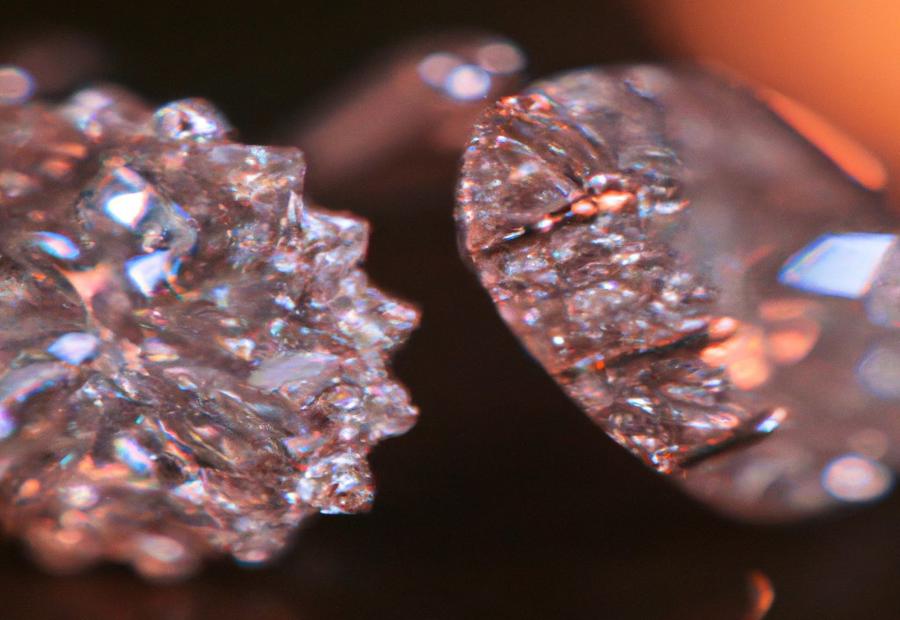
Photo Credits: Www.Lab-Grown-Diamond-Earrings.Com by Ronald Martinez
When it comes to identifying quality lab-grown diamond earrings, there are several factors to consider. From diamond cut to diamond setting, each element plays a significant role in determining the overall quality of the earrings. To ensure you make an informed decision, it’s essential to understand the nuances of these factors. By exploring the expertise of renowned jewelers like Metalmark Fine Jewelry and seeking advice from reputable sources such as the Jewelry Judge, you can confidently navigate the world of lab-grown diamond earrings.
Diamond cut
A diamond’s cut refers to the proportions, symmetry, and polish which control its sparkle. How light enters and exits a diamond is determined by the cut – this decides its general beauty. Light reflection within the stone is increased through a properly cut diamond, amping up its natural fire.
Let’s go deeper into the components of a diamond cut. Proportions are the relationships between the diamond’s dimensions, such as table size, crown height, pavilion depth, and girdle thickness. These proportions are essential to the light reflection process.
Symmetry is the alignment of facets, including shape and placement. A well-cut diamond has great symmetry, which ensures light is dispersed evenly.
Polish is how smooth and flawless the facets are after being polished. A high-quality polish enables the diamond to reflect light.
Choosing lab-grown diamond earrings? Think about these elements to ensure you have pieces with max sparkle and brilliance.
Diamond setting
Diamond Setting:
When choosing lab-grown diamond earrings, the setting is a key factor. How the diamond is held in place affects the appearance and functionality.
- Placement: The diamond must be positioned perfectly to show off its beauty. The angle and height it is set at impact its brilliance and sparkle.
- Metal: A strong metal is needed to secure the lab-grown diamond and enhance its look. Different metals offer unique levels of durability and aesthetic appeal.
- Prong Setting: Prongs are small metal claws that hold the diamond in place. The number and where they are placed can affect visibility and security.
- Halo Setting: Smaller diamonds surround the center stone here. This creates the illusion of size and sparkle. It can add visual interest.
Assessing the diamond setting is essential. Placement, metal, style, and design all contribute to the beauty and longevity of the earrings. Paying attention to detail helps buyers make a quality investment.
Metalmark Fine Jewelry
Artisans from Metalmark Fine Jewelry are famed for their attention to detail when crafting exquisite diamond earrings. Each piece is set with care to make the diamonds shine. The end result? Dazzling earrings that ooze sophistication.
Metalmark Fine Jewelry stand out because of their collaboration with the Jewelry Judge. This partnership allows customers to have their diamond earrings checked by industry experts. Using advanced testing techniques, traditional gemology observations, laser inscriptions and GIA ID100 technology, Metalmark ensure their earrings meet the highest standards.
Metalmark Fine Jewelry strive for excellence with their lab-grown diamond earrings. Their commitment to quality and ethical practices make them a reliable option. When you choose Metalmark, you get a stunning piece and support sustainability. Try out the beauty and sustainability of Metalmark Fine Jewelry yourself.
Jewelry Judge
Lab-grown diamonds have been gaining fame in the jewelry industry. When it comes to assessing the quality of lab-grown diamond earrings, there are a few things to consider. For instance, the Jewelry Judge. This individual specializes in judging jewelry, including lab-grown diamond earrings.
The Jewelry Judge uses advanced methods to determine authenticity and characteristics. They also look at things like cut, clarity, color, and carat weight. Plus, the Jewelry Judge may utilize laser inscription technology to prove origin and traceability.
GIA ID100 is a particular device the Jewelry Judge utilizes. It measures the optical properties of synthetic diamond materials. Using this tool, the Jewelry Judge can deliver an accurate assessment of a lab-grown diamond’s quality and value.
For top-notch lab-grown diamond earrings, it is wise to consult a reputable jewelry retailer or the Jewelry Judge for an unbiased evaluation. Their expertise and methods can help you make an informed decision and guarantee you’re getting genuine lab-grown diamond earrings.
Expert Tips for Evaluating Quality Lab-Grown Diamond Earrings
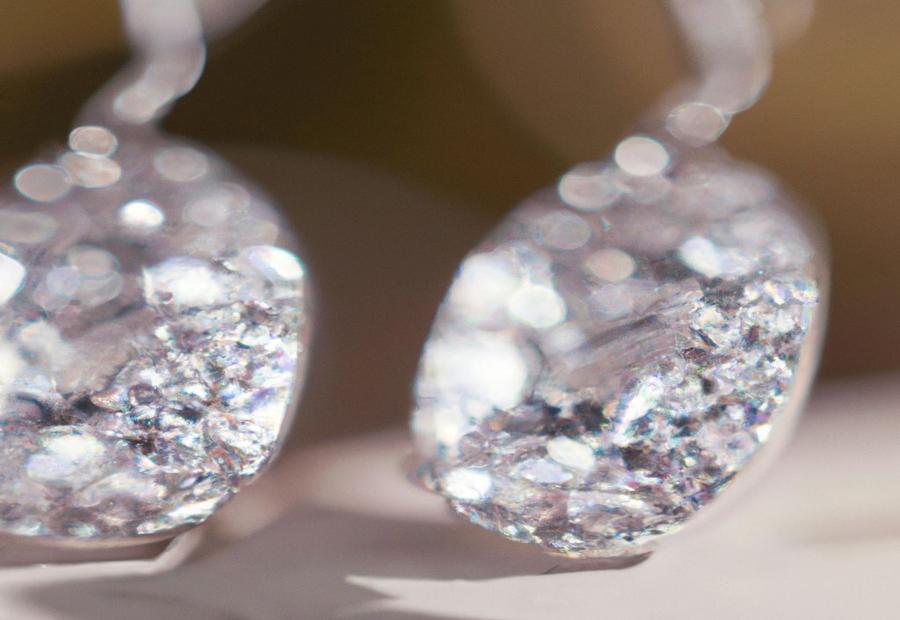
Photo Credits: Www.Lab-Grown-Diamond-Earrings.Com by Zachary Adams
Expert Tips for Evaluating Quality Lab-Grown Diamond Earrings: Discover advanced testing methods, traditional gemological observations, laser inscription, and GIA ID100 to aid in identifying superior lab-grown diamond earrings.
Advanced testing methods
Advanced testing methods provide valuable information to identify genuine lab-grown diamond earrings. Spectroscopy, scanning electron microscopy (SEM), and laser inscription are three of these methods.
Spectroscopy examines the diamond’s light absorption and emission patterns. This helps experts distinguish between natural and lab-grown stones.
SEM is an advanced imaging technology. It allows experts to examine a diamond’s internal structure. This enables them to gain insights into a diamond’s origin and authenticity.
Laser inscription is another method. It engraves a unique identifier onto the diamond’s girdle or surface. This provides traceability and transparency for consumers.
By combining these techniques with traditional gemological observations, experts can make precise evaluations. These are based on scientific evidence rather than subjective judgments.
Traditional gemological observations
To understand traditional gemological observations for lab-grown diamond earrings, let’s look at factors considered in the evaluation process. These include:
- Color grading: involves comparing the color to a set of reference stones. This is done by evaluating the presence or absence of any color tints.
- Clarity grading: looks at any internal or external flaws. Magnification is used to examine these and assign a grade based on the number, size, and visibility of the imperfections.
- Evaluating the overall appearance and optical properties: of lab-grown diamond earrings is another part of the observations. This includes analyzing factors such as brilliance, fire, scintillation, and light performance.
These traditional gemological observations provide insights into quality and visual appeal without relying on advanced testing or scientific analysis. They are important in determining the value and desirability of these earrings.
Laser inscription
Laser inscription not only serves as identification, it has practical uses for assessing diamond quality too. It allows gemologists to mark any flaws and make the markings legible, without harming the stone. This one-of-a-kind inscription method allows customers to customize and personalize their jewelry. They can add initials, dates, and symbols to their lab-grown diamond earrings.
Sarah was able to surprise her wife with a special pair of earrings for their anniversary. She used laser inscription to intertwine their initials with a heart symbol. Her wife was moved by the personalized engraving and appreciated the sentimentality behind it.
The laser inscription made the earrings even more unique and meaningful. GIA ID100 now makes identifying lab-grown diamond earrings easier than ever!
GIA ID100
GIA ID100 is an impressive testing method for lab-grown diamond earrings. Its advanced technology offers exact identification and appraisal. The table below outlines the features and advantages of GIA ID100:
| Features | Benefits |
|---|---|
| Advanced Testing | Accurate identification |
| State-of-the-Art Tech | Sure assessment |
| Comprehensive Analysis | In-depth evaluation |
| Quality Assurance | High-grade lab-grown diamonds |
Aside from its advanced testing, GIA ID100 has special info to boost the evaluation. It imprints a permanent mark on the diamond using laser inscription. This guarantees traceability and authentication, giving buyers extra assurance and increasing market clarity.
Conclusion
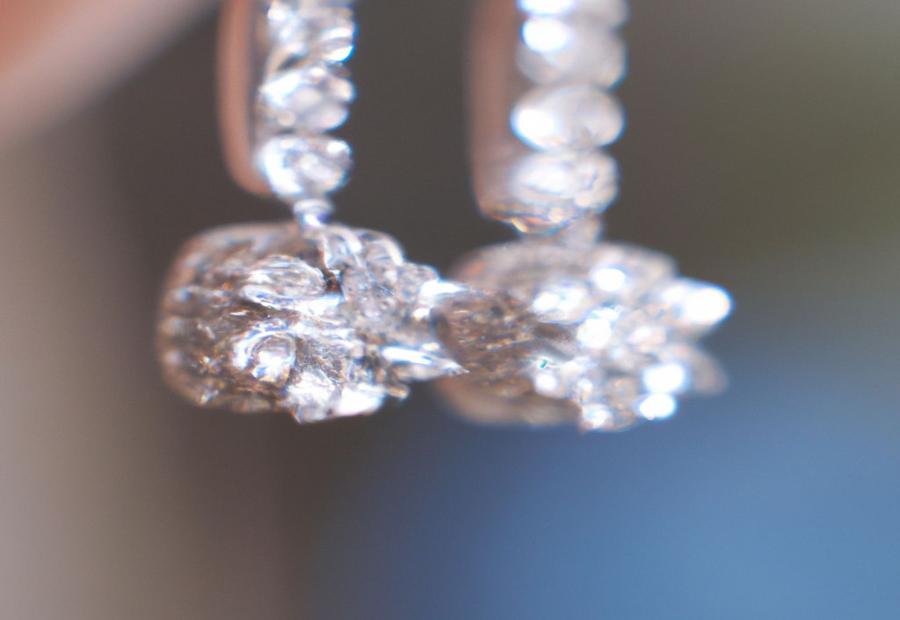
Photo Credits: Www.Lab-Grown-Diamond-Earrings.Com by Nathan Moore
In the end, when searching for lab grown diamond earrings of good quality, it’s important to inspect several factors. These include:
- The diamond’s quality
- The origin of the diamonds
- The craftsmanship of the earrings
The diamonds should be chemically, physically and optically the same as natural diamonds, with excellent clarity, color and cut.
Check that they are from a reliable laboratory, with certifications and documentation to verify authenticity.
Finally, evaluate the design, setting and overall finish of the earrings. Ensure they have a secure setting, smooth edges and a polished appearance.
By paying attention to these details, you can be sure you are buying beautiful and ethical earrings.
Some Facts About How to Identify Quality Lab Grown Diamond Earrings:
- ✅ Laboratory-grown diamonds are chemically and optically identical to natural diamonds, making it difficult to distinguish between the two using traditional gemological methods. (Source: Team Research)
- ✅ The Gemological Institute of America (GIA) utilizes advanced devices like the GIA iD100® and other instrumentation to accurately identify natural diamonds. (Source: Team Research)
- ✅ To determine whether a diamond is natural or laboratory-grown, it is recommended to send it to a gemological laboratory for thorough examination and advanced testing. (Source: Team Research)
- ✅ Lab-grown diamonds are more sustainable and affordable compared to mined diamonds, making them a popular choice for consumers. (Source: Call 6 Investigators)
- ✅ When shopping for lab-created diamond earrings, it is important to consider the 4Cs (cut, carat, color, and clarity) and set a budget. (Source: Loose Grown Diamond)
FAQs about How To Identify Quality Lab Grown Diamond Earrings?
How can I identify quality lab-grown diamond earrings?
When shopping for lab-grown diamond earrings, there are certain factors to consider in order to identify quality pieces:
- Look for reputable jewelers: Begin by browsing through a selection of trusted and reputable jewelers who specialize in lab-grown diamonds. These jewelers are more likely to offer high-quality lab-grown diamond earrings.
- Consider the 4Cs: The 4Cs – cut, carat, color, and clarity – are essential in determining the quality of any diamond, including lab-grown diamonds. Pay close attention to these factors to ensure you choose a high-quality lab-grown diamond earring.
- Get a diamond grading report: Ask for a diamond grading report that provides detailed information about the diamond’s quality. This report will help you assess the overall value and quality of the lab-grown diamond earrings.
- Consult a gemologist: If you want expert advice, consult with a gemologist who can examine the lab-grown diamond earrings and provide a professional opinion on their quality. They have the knowledge and expertise to identify the key characteristics of high-quality lab-grown diamonds.
Can I scroll and browse different types of lab-created diamond earrings?
Absolutely! When shopping for lab-created diamond earrings, you have the freedom to scroll and browse through various types and designs. There are options available for unique, classic, and modern designs to suit different preferences. You can explore different retailers’ websites or visit jewelry stores to find the perfect lab-created diamond earrings that match your style and taste.
What are the popular designs of lab-created diamond earrings?
Some popular designs of lab-created diamond earrings include:
- Handmade diamond pave halo earrings
- Scroll basket diamond stud earrings
- 4 prong diamond stud earrings
- 6 prong scalloped basket earrings
- Round lab-created diamond halo earrings
- Round lab diamond two stone drop earrings
- Star lab-created diamond cluster earrings
These designs offer a variety of choices suitable for different occasions, styles, and personal preferences.
Are lab-grown diamond earrings a gift option for special occasions like Valentine’s Day?
Yes, lab-grown diamond earrings can be an excellent gift option for special occasions like Valentine’s Day. They are not only beautiful and affordable compared to mined diamonds, but they also offer an environmentally friendly alternative. Lab-grown diamond earrings can symbolize love and care while being a sustainable choice for the environment.
Can lab-created diamond earrings be identified with the naked eye?
No, lab-created diamond earrings cannot be easily identified with the naked eye. They possess the same chemical and optical properties as natural diamonds, making it challenging to distinguish between the two without magnification or advanced gemological instruments. To determine whether an earring is lab-grown or natural, it is recommended to consult a gemologist or send the earrings to a gemological laboratory for thorough examination and testing.
Are lab-grown diamond earrings available at local mall jewelers?
Lab-grown diamond earrings are increasingly becoming available at local mall jewelers. As the popularity of lab-grown diamonds grows, more jewelers are offering them in their collections. When visiting a local mall jeweler, inquire about their selection of lab-grown diamond earrings and ask for detailed information about the quality and certification of the diamonds.

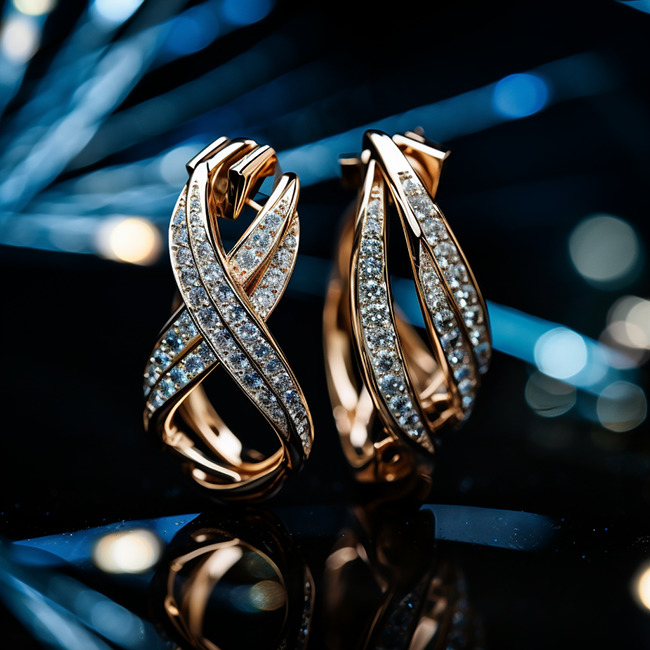
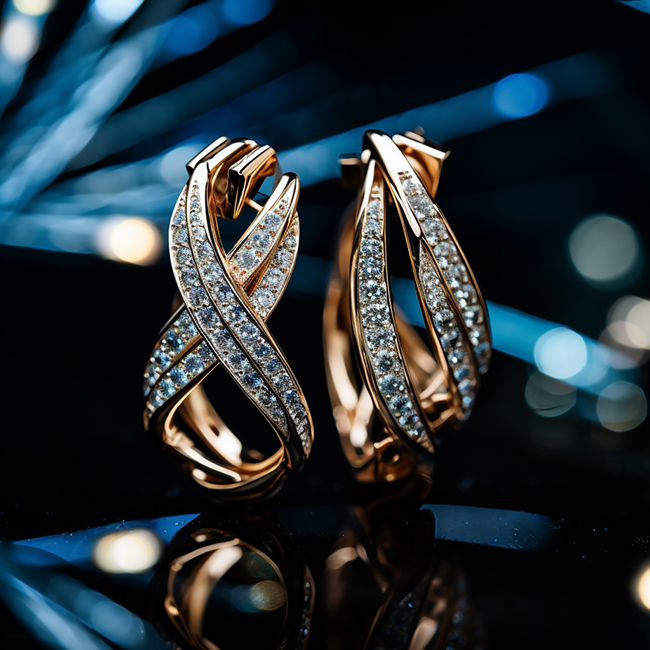
Leave a Reply